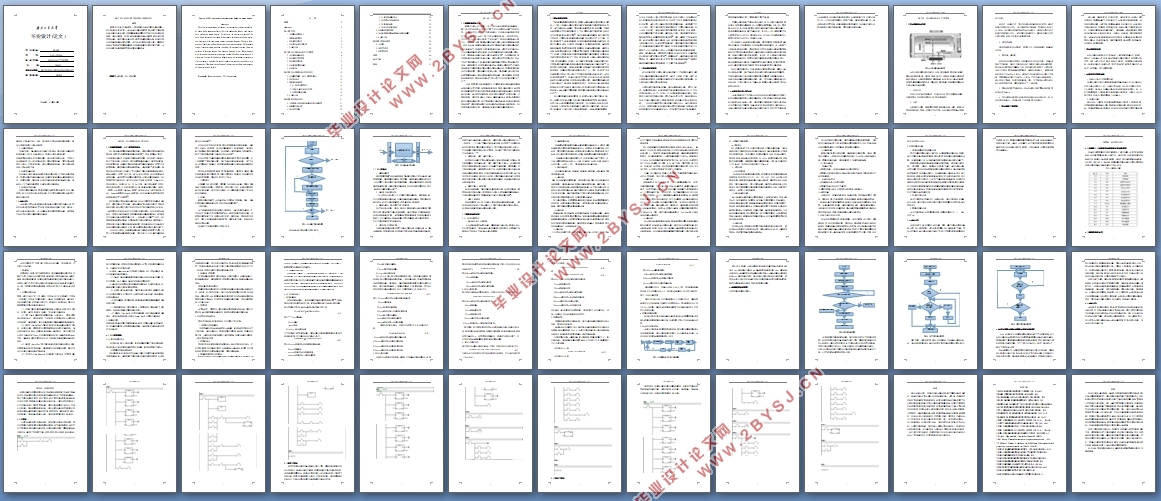基于PLC的热水器自动控制系统的设计
无需注册登录,支付后按照提示操作即可获取该资料.
基于PLC的热水器自动控制系统的设计(任务书,开题报告,外文翻译,论文说明书20000字)
摘要
随着人们生活水平日益提高,人们对家庭生活中的舒适要求也越来越高。热水器已经走进千家万户。本文结合热水器的实际应用,重点研究了系统的硬件组成和软件设计的过程,并根据精确控制的需要设计了基于PLC热水器的控制器。并结合传感器、PLC和一些特殊功能模块的特点和应用,提出本设计要实现的功能。完成对硬件设备的选型,搭建了控制器的硬件电路。软件设计部分按控制的要求画出程序流程图,进行PLC的选型和系统I/0分配。根据要求绘制出了系统电气原理图和接线图。并考虑系统维护的方便性和可扩展性。本设计的最大特点就是能实现对洗浴温度的精确控制。
关键字:电热水器 PLC 控制系统
Design of PLC automatic control system based on water heater
Abstract
With the rapid development of people's living standard, an increasingly number of people higher demands on family life in the comfortable. Electric water heaters have walked into people's homes. In this paper, the practical application of the water heater focuses on the process of the system's hardware and software design, and according to the need precise control is designed based on PLC water heater controller. Combined with the characteristics and application sensors, PLC and some special function modules, designed to achieve the proposed functions. Complete selection of hardware devices, built controller hardware circuit. Software design draw by program flow control requirements, conduct PLC selection and system I / 0 allocations. Draw out of the electrical schematics and writing diagrams according to the requirements. And take the ease of system maintenance and scalability into consideration. The most important feature of this design is to achieve precise control of the temperature of the bath.
Keywords:Electric water heater ; PLC ; Control system
本设计特点及主要内容
本设计是基于西门子STEP7—200 系列PLC的热水器控制器设计,其最大的优点就是能够实现对出水温度的精确控制,这是一般的单片机控制的太阳能热水器所无法与之相比的。另外,通过使用液位传感器还可以对液位进行控制以及实现液位的上下限报警。当储水箱水位低于设定的下限时,系统自动上水。当储水箱温度低于洗浴的设定温度时电加热器开始工作,同时为了尽可能的减少电能的浪费,当加热到设定的温度上限时,电加热器退出工作,这样可以满足人们一天24小时的不间断用水。同时为了避免一些可能出现的问题,在一些必要的地方设置了互锁。系统还拥有自动手动两套程序,当系统运行过程中出现问题时可以通过手动切除故障,实现系统的自动手动控制。


目 录
摘要 I
Abstract I
第一章 引言 1
1.1选题的目的和意义 1
1.2国内外研究现状 2
1.3热水器市场分析 3
1.4本设计特点及主要内容 4
1.5 本章小结 5
第二章 热水器的组成及工作原理 6
2.1热水器的基本结构 6
2.2热水器的工作原理 7
2.3热水器类型选择 8
2.4本设计要实现的功能 8
2.5本章小结 9
第三章 热水器硬件的选型及设计 10
3.1可编程控制器(PLC)的发展及简介 10
3.2 PLC的特点 13
3.3硬件设备的选型 14
3.3.1 PLC的选型原则 14
3.3.2基于本设计的PLC选型 18
3.3.3其他硬件的选择 19
3.4 本章小结 19
第四章 软件部分设计 21
4.1系统的I/O口地址及相关的软元件功能设置 21
4.2编程软件的介绍 22
4.3 PID闭环控制 23
4.3.1 PID控制器的优点 23
4.3.2实现PID控制的方法 24
4.3.3 PID算法简介 25
4.3.4本设计的PID控制 29
4.4系统的程序流程图 30
4.5电热水器防止漏电问题的办法和注意事项 33
4.6 本章小结 34
第五章 系统的程序 35
5.1主程序 35
5.2液位子程序 39
5.3温度子程序 42
结语 46
参考文献 47
致谢 48
